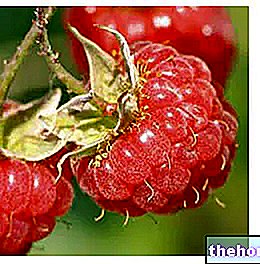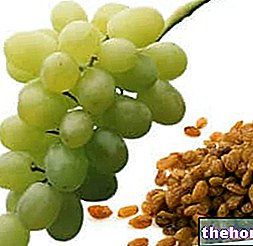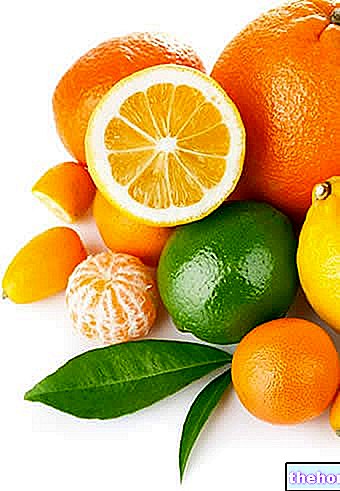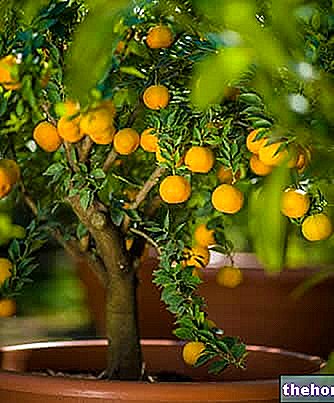What is that?
Lime (from Arabic and French “lim”) is a vegetable belonging to the Rutaceae Family, Genus Citrus, Species C. x aurantifolia.
As indicated by the "x" in the binomial nomenclature, it is a hybrid, obtained by "crossing the Citrus micrantha and cedar (Citrus medica).

To be sure, "lime" is a term often used in a generic way. In addition to the key lime (C. x aurantifolia), are also called lime: the Persian lime (C. x latifolia), kaffir lime (Citrus hystrix) and desert lime (Citrus glauca) etc.
Limes are an excellent source of vitamin C and belong to the VII fundamental group of foods. They are used to flavor foods and flavor drinks.
Their agricultural production makes the fruits available all year round.
Nutritional Characteristics
Limes are foods of plant origin which, being rich in vitamin C, fall into the VII food group.
They have a rather limited energy density; calories are provided above all by simple carbohydrates, followed marginally by proteins (with a low biological value) and lipids (unsaturated).
Limes are an excellent source of water and, if eaten regularly, help to maintain the state of hydration.
They are cholesterol-free and provide a fair amount of fiber (with a good percentage of the solubles).
As for the vitamin profile, we have already specified that limes are rich in ascorbic acid (vitamin C); with regard to mineral salts, however, the most abundant is potassium.
Limes lend themselves to any diet; however, in case of pathologies affecting the lining of the stomach (gastritis and ulcer), it is not advisable to eat them (or drink their juice) on an empty stomach.
They have no contraindications for nutritional regimes against overweight, metabolic diseases, gluten intolerance and lactose intolerance; they are relevant to vegetarian, vegan and raw food diets.
In Italy they are a fairly obsolete food; however, the average portion could be around 150-250g.

Health Effects
While it contains less vitamin C than lemon, lime is still an excellent food source of ascorbic acid. 100g of limes provide about 35% of the recommended daily value.
Lime pulp and peel contain various phytochemicals that are active and useful for the body, including above all polyphenols and terpenes. These are antioxidant molecules that oppose free radicals, improve the metabolic condition and hinder tumor formation.
By putting human skin in contact with lime zest or pulp (rich in coumarins) and by exposing it to ultraviolet light, a known reaction occurs phytophotodermatitis.
The lime richest in these phototoxic components is the Persian one; the most abundant molecule in the category is citroptene limetin.
Uses
Lime juice can be squeezed from fresh fruits or bought in bottles in the sweetened or sugar-free varieties.
Lime juice is used to make drinks called limeade (similar to "lemonade" or lemonade). Furthermore, it constitutes a very widespread base and used for the formulation of cocktails.
Canned lime (lime pickle) is a typical Indian product (especially from the southern portion). In the sweet, salty or in sauce types, it is considered a fundamental ingredient of the "Onam Sadhya (traditional dish).
In cooking, lime is appreciated both for the acidity of the juice and for the floral aroma of the zest.
It is also a very common ingredient in Mexican, Vietnamese and Thai dishes.
It is also used to season the ceviche (dish of Latin America based on raw fish) or in some recipes of guacamole.
Video Recipes with Lime »

The key lime is the main aromatic ingredient of Key Lime Pie, an American dessert. The desert lime, on the other hand, is used in Australia for jams.
Lime is a fundamental base for many tumbler-cocktails. The alcoholic base most used together with this fruit is gin; some examples are: gin and tonic, gimlet and Rickey. Fresh lime juice is considered an irreplaceable ingredient of Margarita.
Cubed lime pounded with brown sugar is widely used in association with rum, cachaca and vodka. Some cocktails that include this base are: mojito, cube, caipiroska, caipirinha and caipirissima.
Lime extract and related essential oils are often used in the formulation of perfumes, hygiene products and aromatherapy.
Cheesecake Mojito
Problems with playing the video? Reload the video from youtube.
- Go to the Video Page
- Go to the Video Recipes Section
- Watch the video on youtube
Background
Already in the past, limes were grown on a large scale in Persia, more precisely in the south of present-day Iraq (once known as Babylon). Here, the first form of commercialization of the fruit also began.
In the 19th century, British sailors consumed these citrus fruits (or lemons) daily to prevent scurvy.
Initially, the therapeutic use of citrus fruits was so important that it was considered a military secret. That is why, in the English language, the sailor is also nicknamed "Limey".
Other Foods - Fruits Apricots Sour cherries Cashews Pineapple Watermelon Orange Avocado Banana Persimmon Persimmons Apple Chestnuts Cedar Cherries Coconut Watermelon Dates Feijoa Fig of India Figs Strawberries Berries Passion fruit (Maracujà, Granadilla) Jujube Kiwi Raspberries Coconut milk Lemons Almond milk Mango Apples Quinces Pomegranate Melon Blackberries Mustard Medlar Olives Taggiasca Olives Fermented Papaya Pears Peaches Plantains (Cooking Bananas) Pomelo Grapefruit Pink Grapefruit Plums, prunes Fruit juices and fruit juices Grape juice Plums Grapes Sultanas and Raisins OTHER ITEMS FRUIT Categories Food Alcoholics Meat Cereals and derivatives Sweeteners Sweets Offal Fruit Dried fruit Milk and derivatives Legumes Oils and fats Fish and fishery products Salami Spices Vegetables Health recipes Appetizers Bread, Pizza and Brioche First courses Second courses Vegetables and Salads Sweets and Desserts Ice cream and sorbets Syrups, liqueurs and grappas Prepare Basic tions ---- In the kitchen with leftovers Carnival recipes Christmas recipes Light diet recipes Women's, mom's and dad's day recipes Functional recipes International recipes Easter recipes Gluten-free recipes Diabetic recipes Holiday recipes Valentine's Day recipes Vegetarians Protein recipes Regional recipes Vegan recipes




























